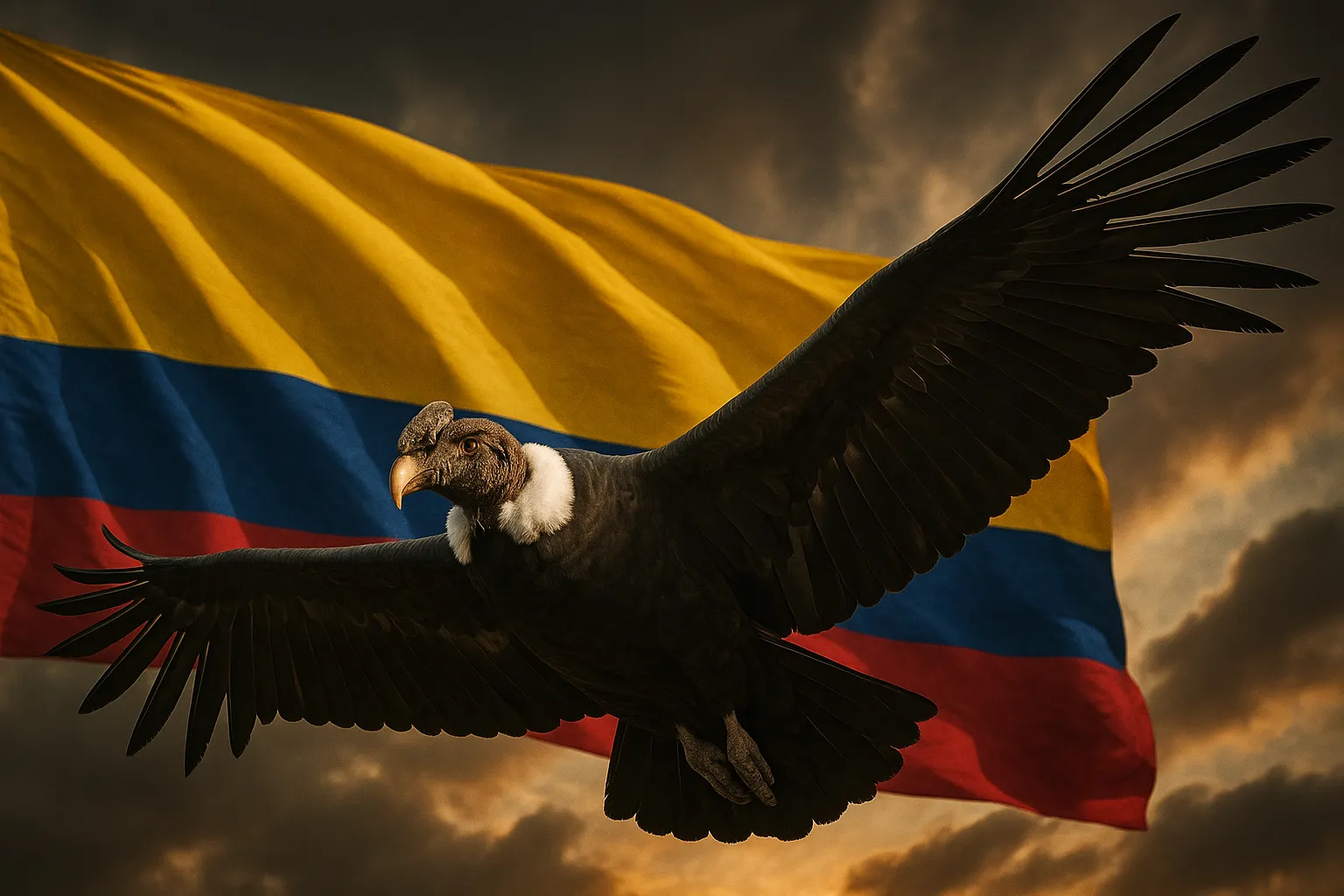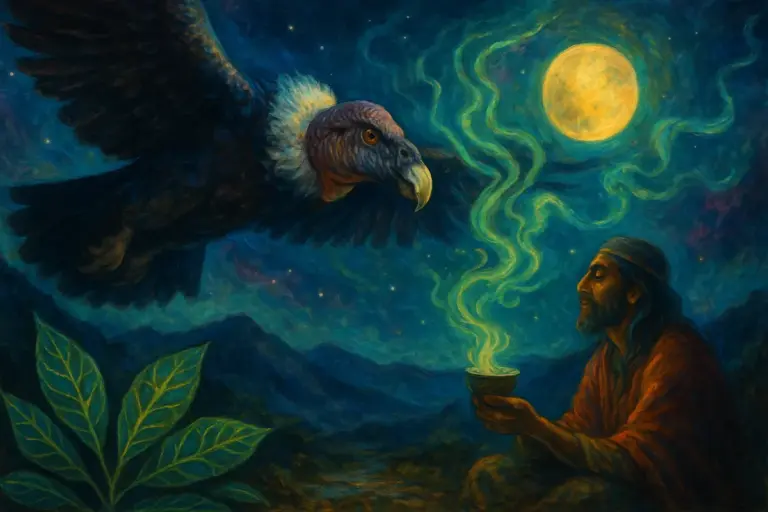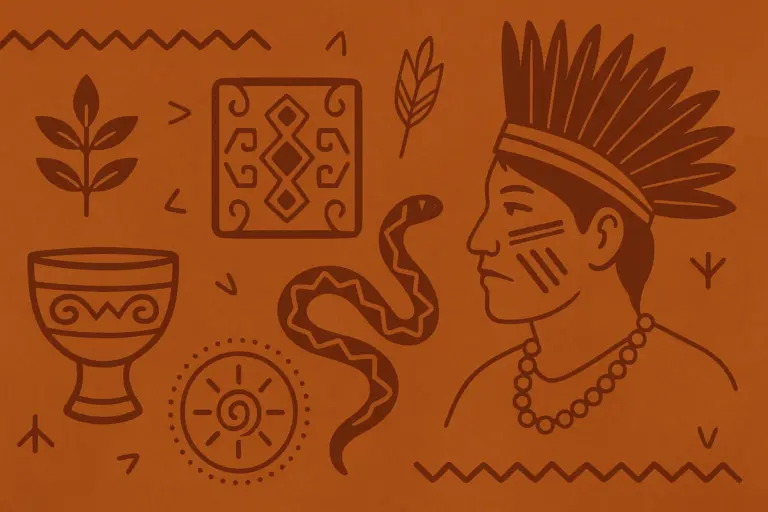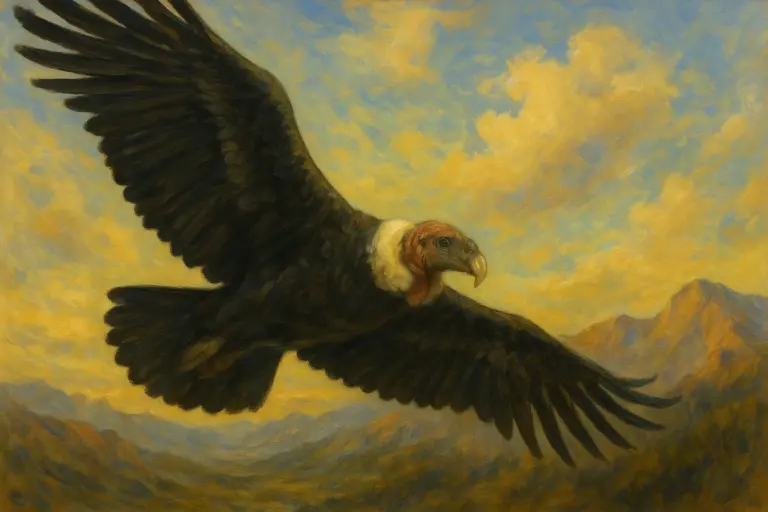The Andean Condor — Colombia’s National Bird and Sky Guardian
The Andean condor (Vultur gryphus) soars through the Colombian skies as more than just a magnificent bird of prey. This sacred creature, deeply woven into the spiritual fabric of andean condor colombia traditions, represents one of the most profound symbols in indigenous cosmology. As colombia national bird and a powerful spiritual messenger, the andean condor spiritual symbolism extends far beyond its impressive 10-foot wingspan, reaching into the very heart of Colombian indigenous wisdom and modern spiritual awakening.
In the misty peaks of the Colombian Andes, where ancient traditions meet contemporary spiritual seeking, the condor emerges as a bridge between worlds. This majestic bird carries within its flight patterns the encoded wisdom of millennia-old indigenous teachings. From the condor symbolism andean culture to its role in modern ceremony, the condor continues to guide spiritual seekers toward deeper understanding of their place in the cosmic order.
The Andean Condor — Colombia’s National Bird and Sky Guardian
The Andean condor stands as one of nature’s most remarkable achievements, embodying both biological supremacy and spiritual significance in Colombian culture. As the colombia national bird, this magnificent creature represents the nation’s connection to its indigenous roots and its commitment to preserving the sacred relationship between humanity and the natural world.
With a wingspan reaching up to 3.3 meters (10 feet 10 inches) and weighing up to 15 kilograms (33 pounds), the Andean condor ranks among the largest flying birds on Earth. This impressive size serves not merely as a biological advantage but as a powerful metaphor for the expansive consciousness that indigenous traditions associate with spiritual awakening. The condor’s ability to soar at altitudes exceeding 5,000 meters (16,400 feet) without flapping its wings for hours represents the effortless flow of spiritual energy when one aligns with natural forces.
The condor’s distinctive appearance carries deep symbolic meaning within Colombian indigenous traditions. The male’s prominent red comb and wattle, which can change color based on emotional state, symbolize the dynamic nature of spiritual awareness and the importance of emotional authenticity in sacred practices. The striking contrast between the bird’s black plumage and white wing patches represents the balance between shadow and light, earth and sky, material and spiritual realms that characterizes mature spiritual understanding.
In Colombia, the Andean condor’s range historically extended from the Santa Marta Mountains in the north through the three Andean cordilleras. However, human activity has dramatically reduced their presence, making sightings increasingly rare and precious. This scarcity has only intensified the bird’s spiritual significance, as indigenous communities view each condor encounter as a profound blessing and message from the spirit world.
Spiritual Symbolism in Indigenous Traditions
The condor symbolism andean culture represents one of the most sophisticated and enduring spiritual teaching systems in the Americas. Across diverse indigenous communities throughout Colombia, the condor serves as a master teacher, spiritual guide, and sacred messenger whose wisdom transcends cultural boundaries while maintaining deep roots in specific traditional contexts.
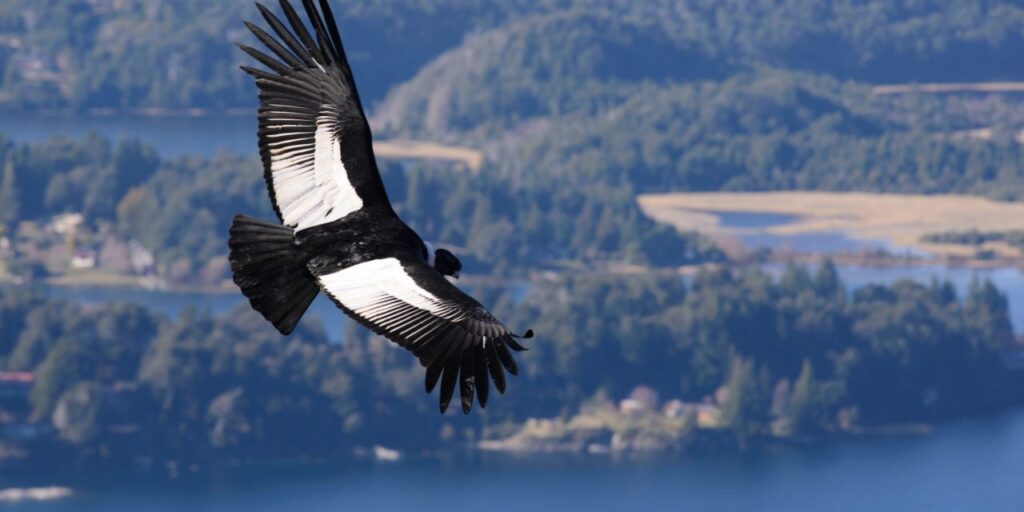
Messenger Between Worlds
In the cosmological understanding of Colombian indigenous peoples, particularly the Muisca civilization that once flourished in the Altiplano Cundiboyacense, the condor occupies a unique position as an intermediary between the earthly realm and the celestial spheres. This role stems from the bird’s extraordinary ability to soar at altitudes where few other creatures can survive, literally bridging the gap between human consciousness and divine awareness.
The Muisca traditions describe the great bird as a direct emissary of Sua, the sun deity who governed the upper world in Muisca cosmology. According to these ancient teachings, condors possessed the ability to carry prayers and offerings directly to the solar divinity, ensuring that human petitions reached the highest levels of spiritual authority.
In Inca cosmology, the great bird occupied an equally exalted position within the three-world system that structured Incan spiritual understanding. The condor ruled over Hanan Pacha, the upper world of celestial beings and divine consciousness, while the puma governed Kay Pacha, the middle world of human experience, and the serpent controlled Uray Pacha, the lower world of ancestral wisdom and earth energies.
Symbol of Freedom, Vision, and Renewal
The condor’s extraordinary vision, capable of spotting carrion from distances exceeding 15 kilometers, symbolizes the clarity of perception that accompanies spiritual maturity. Indigenous teachings emphasize that developing “condor vision” involves learning to see beyond surface appearances to perceive the underlying spiritual dynamics that govern all existence.
The renewal aspect of condor symbolism connects directly to the bird’s role in the natural recycling of life energy. By consuming carrion, condors transform death into renewed vitality, embodying the spiritual principle that apparent endings actually represent new beginnings in disguise. This understanding provides profound comfort and guidance for individuals navigating personal transformation, loss, or major life transitions.
For those seeking to explore these teachings more deeply, authentic ayahuasca retreats in Colombia offer opportunities to experience condor wisdom within traditional ceremonial contexts.
The Eagle and Condor Prophecy
The eagle and condor prophecy stands as one of the most significant and timely spiritual teachings emerging from indigenous wisdom traditions across the Americas. This ancient prophecy speaks directly to our current historical moment and offers profound guidance for humanity’s spiritual evolution.
According to the prophecy, human civilization would eventually split into two distinct paths of development. The path of the Eagle, representing the northern hemisphere, would emphasize technological advancement and mind-based approaches to understanding reality. The path of the Condor, representing the southern hemisphere and indigenous wisdom traditions, would maintain connection to heart-centered knowing and harmonious relationship with the natural world.
The prophecy foretold that beginning around 1490, the Eagle people would gain tremendous power and influence, spreading their approach across the globe and nearly driving the Condor people to extinction. However, the prophecy also speaks of a great turning point that would occur around the year 2000, marking the beginning of a new era when the Eagle and Condor would have the opportunity to fly together.
This reunification would not represent the dominance of one path over the other but rather the integration of their respective gifts into a more complete and balanced approach to human development. Colombia’s unique position as a bridge between North and South America makes it an ideal laboratory for this prophetic convergence.
For a deeper exploration of this prophecy and its modern relevance, read our comprehensive guide to the Eagle and Condor Prophecy.
The Condor in Colombian Ceremony and Plant Medicine
The integration of condors in Colombian spiritual practice represents one of the most profound aspects of indigenous ceremony. In the sacred medicine traditions of Colombia, particularly those involving yagé (the Colombian term for ayahuasca), the condor frequently appears as a powerful ally, teacher, and guide for individuals seeking deeper spiritual understanding and healing.
The appearance of condors during yagé experiences carries profound significance within Colombian shamanic traditions. Unlike casual encounters with animal spirits, condor visitations typically occur during moments of deep spiritual opening when participants are ready to receive advanced teachings about perspective, freedom, and spiritual sovereignty.
Traditional icaros (sacred songs) used in Colombian yagé ceremonies often invoke condor energy and request the great bird’s guidance and protection. These songs, passed down through generations of indigenous healers, contain specific melodic and rhythmic patterns designed to attract condor consciousness and facilitate its integration into the ceremonial space.
The relationship between condors and plant medicine extends beyond ayahuasca to encompass a broader network of sacred plants and traditional healing practices. Mapacho (sacred tobacco), mambe (coca preparation), and ambil (tobacco paste) all play important roles in condor-related ceremonies throughout Colombia.
To learn more about the condor’s role in ceremonial contexts, explore our detailed article on Condor in Yagé and Plant Medicine Traditions.
Conservation and Cultural Responsibility
The current conservation status of the Andean condor in Colombia represents far more than an environmental challenge—it embodies a profound spiritual crisis that reflects humanity’s disconnection from sacred relationship with the natural world. The Andean condor’s classification as “Vulnerable” by the International Union for Conservation of Nature (IUCN) tells only part of the story.
In Colombia specifically, condor populations have declined so dramatically that sightings have become extraordinarily rare events, often interpreted by indigenous communities as powerful spiritual messages rather than routine wildlife encounters. The primary threats facing Colombian condor populations include habitat loss due to mining, agriculture, and urban development, as well as lead poisoning from ammunition used by hunters.
The spiritual dimensions of condor conservation become apparent when we consider indigenous perspectives on the relationship between species extinction and cultural survival. Elder teachers throughout Colombia explain that the disappearance of condors from their traditional territories signals a breakdown in the cosmic order that governs all life.
This understanding motivates conservation approaches that integrate scientific methodology with traditional spiritual practices. Captive breeding programs for Andean condors in Colombia increasingly involve indigenous communities as partners rather than merely consultants, recognizing that successful species recovery requires restoration of the cultural and spiritual contexts that originally supported healthy condor populations.
For detailed information about conservation efforts and how you can help, read our comprehensive guide to Condor Conservation in Colombia.
Why the Condor Matters Today
In our current era of unprecedented global transformation, the teachings of the Andean condor offer essential guidance for navigating the complex challenges facing humanity. The condor’s role as a symbol of healing and collective renewal becomes increasingly significant as humanity grapples with interconnected crises of environmental destruction, social inequality, and spiritual disconnection.
The condor’s teaching about patience and long-term perspective offers crucial guidance for activists and change-makers who may feel discouraged by the slow pace of progress or the magnitude of the challenges they face. The condor’s ability to soar for hours without flapping its wings demonstrates the power of aligning with natural forces rather than relying solely on personal effort and determination.
The mountainous region of Antioquia, surrounding Colombia’s second-largest city of Medellín, holds particular significance for understanding the contemporary relevance of condor spirituality. This area serves as a bridge between traditional indigenous wisdom and modern urban consciousness, making it an ideal location for exploring the practical applications of condor teachings.
The transformation of Medellín from a city associated with violence and conflict to a model of urban innovation and social progress exemplifies the type of renewal that condor consciousness can facilitate. This remarkable transformation required the same qualities that condors embody: the ability to see beyond immediate circumstances, patience for long-term change processes, and commitment to recycling destructive energies into constructive possibilities.
To explore how condor teachings apply to modern life and spiritual practice, read our article on Why the Condor Matters Today: Healing and Renewal.
FAQ
Conclusion — The Condor as Our Teacher
The Andean condor spiritual symbolism offers profound guidance for navigating our current era of unprecedented global transformation. As we face interconnected challenges of environmental crisis, social upheaval, and spiritual disconnection, the condor’s teachings about perspective, patience, and renewal provide essential wisdom for creating positive change in our world.
The condor’s message transcends cultural boundaries while maintaining deep roots in the sacred traditions of Colombian indigenous peoples. Whether encountered in the misty peaks of the Andes, the visionary realms of plant medicine ceremony, or the quiet moments of personal reflection, the condor consistently offers the same fundamental teaching: true freedom comes not from escaping our circumstances but from gaining the elevated perspective needed to transform them.
For those called to explore these teachings more deeply, Colombia offers unique opportunities to experience authentic condor wisdom within its original cultural and geographical context. To learn more about ayahuasca ceremonies in Medellín or explore the meaning of ayahuasca in indigenous traditions, our comprehensive guides provide essential information for spiritual seekers.
The condor soars above us still, patient and eternal, waiting for humanity to remember its true nature and reclaim its rightful place in the cosmic order. The time for this remembering is now, and the condor’s teachings light the way forward into a future worthy of our highest aspirations and deepest dreams.

